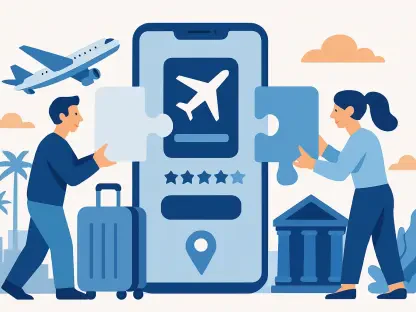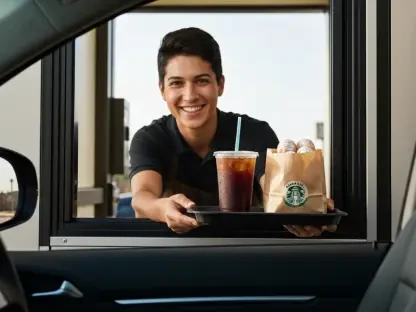Imagine a city buzzing with the energy of a global sporting event, where millions of visitors and locals alike navigate through crowded streets, all relying on public transit to get them to the action on time. In such high-stakes scenarios, the efficiency and reliability of transportation systems can make or break the experience. Recognizing this critical need, the Los Angeles County Metropolitan Transportation Authority has launched an innovative resource to transform how transit agencies manage large-scale events. This comprehensive guide, developed in collaboration with industry experts, offers a roadmap for handling everything from international mega-events to local celebrations. By compiling best practices from past experiences, it aims to ensure seamless operations and exceptional rider experiences, setting a new standard for event transportation across the nation.
A Blueprint for Transit Excellence
Defining the Purpose and Scope
The newly introduced resource from L.A. Metro serves as a strategic tool designed to support transit agencies in aligning their missions with the unique demands of special events. Known as a dynamic playbook, it emphasizes the importance of advocacy and coordination both within agencies and with external stakeholders. This guide is not just for global spectacles but also for regional and local gatherings, ensuring that every event benefits from streamlined planning. It provides a framework for understanding the broader goals of transit during high-traffic periods, such as enhancing mobility and accessibility. By focusing on purposeful alignment, the playbook helps agencies anticipate challenges and create cohesive strategies that prioritize rider needs, whether for a concert crowd or an international competition. This foundational approach ensures that every decision made contributes to a larger vision of operational success and public satisfaction.
Beyond the initial alignment of purpose, the playbook delves into actionable coordination tactics that bridge gaps between various entities involved in event planning. It highlights the necessity of clear communication with elected officials and host communities to foster a shared understanding of transit’s role. This section also addresses how agencies can advocate for necessary resources and support, ensuring they are equipped to handle surges in demand. The guidance provided is meant to be adaptable, allowing for customization based on the scale and nature of the event. From political rallies to cultural festivals, the strategies encourage proactive engagement with all parties to mitigate potential disruptions. This collaborative focus aims to build trust and reliability, reinforcing the idea that transit is a cornerstone of successful event execution, no matter the audience size or event significance.
Crafting Comprehensive Service Plans
A key component of the playbook is its detailed approach to service planning, which tackles the complexities of forecasting demand and maintaining operational reliability during events. Agencies are guided on how to anticipate ridership spikes through data analysis and historical trends, ensuring that supplemental services are ready to meet increased needs. The emphasis on speed and consistency means that regular commuters are not sidelined by event-specific adjustments. Additionally, first- and last-mile solutions are explored to connect attendees seamlessly from transit hubs to venues. This meticulous planning is crucial for preventing bottlenecks and ensuring that every journey, whether for a daily commute or a one-time event, remains smooth and efficient across urban landscapes.
Further expanding on service planning, the playbook offers insights into integrating temporary enhancements without disrupting core operations. It suggests innovative approaches like dedicated event shuttles or adjusted schedules to accommodate peak times. The guidance also stresses the importance of real-time adaptability, encouraging agencies to monitor conditions and make swift adjustments as needed. By balancing the needs of event-goers with those of everyday riders, the strategies aim to uphold service quality under pressure. This dual focus not only addresses immediate logistical challenges but also builds long-term trust in public transit systems. Agencies can use these plans to demonstrate their capability to handle complexity, reinforcing their role as vital infrastructure during both routine days and extraordinary occasions.
Enhancing Rider Experience and Safety
Prioritizing Safety and Emergency Preparedness
Safety remains a paramount concern in the playbook, with a dedicated focus on managing crowds and securing transit environments during large gatherings. Detailed protocols for emergency operations planning are outlined, ensuring agencies are prepared for unexpected incidents. The strategies include robust crowd control measures to prevent overcrowding at stations and on vehicles, alongside coordinated security efforts with local authorities. This comprehensive approach aims to create a safe space for all riders, whether they are heading to a major sporting event or navigating daily routes. By embedding these practices into event planning, transit systems can mitigate risks and respond effectively to any situation that arises, maintaining public confidence.
In addition to immediate safety measures, the playbook underscores the value of long-term emergency preparedness through training and simulations. Agencies are encouraged to conduct regular drills that test their response capabilities under various scenarios, from natural disasters to security threats. Partnerships with emergency services are also highlighted as critical for a unified response during crises. These preparations ensure that staff are well-equipped to handle high-pressure situations with calm efficiency. The focus on continuous improvement through post-event evaluations further refines these safety protocols, allowing lessons learned to strengthen future responses. This proactive stance on safety not only protects riders but also enhances the overall credibility of transit operations during significant public events.
Elevating Customer Engagement
The playbook places a strong emphasis on transforming the rider journey into a memorable and accessible experience during special events. Clear signage and intuitive wayfinding are prioritized to guide attendees through complex transit networks with ease. Integrated ticketing systems are recommended to simplify fare processes, while ambassador programs provide on-the-ground support to answer questions and assist travelers. Accessibility remains a core focus, ensuring that all individuals, regardless of ability, can navigate systems comfortably. These efforts collectively aim to reduce stress and enhance satisfaction, turning logistical necessities into positive interactions that leave lasting impressions on both visitors and locals.
Beyond basic navigation aids, the playbook introduces creative engagement tactics designed to surprise and delight riders. Concepts like themed transit experiences or interactive elements at stations are suggested to add a layer of enjoyment to travel. These initiatives are balanced with practical measures, such as real-time updates through mobile apps, to keep passengers informed of any changes. The goal is to foster a sense of connection and care, making public transit not just a means of getting around but a valued part of the event experience. By weaving accessibility and engagement into every touchpoint, agencies can build loyalty and encourage repeat usage, even after the event concludes. This customer-centric approach reflects a broader commitment to excellence in service delivery.
Looking Back at a Game-Changing Initiative
Reflecting on the impact of L.A. Metro’s innovative playbook, it became evident that this resource marked a significant step forward in special event transportation management. Its structured framework, built on lessons from past global events, provided transit agencies with actionable tools to navigate complex challenges with confidence. The collaborative spirit behind its development, involving industry leaders and international expertise, set a precedent for shared knowledge that benefited systems nationwide. Looking ahead, the playbook’s adaptability promised to guide agencies through upcoming mega-events while refining everyday operations. Transit professionals were encouraged to leverage its evolving insights, test strategies in real-world scenarios, and contribute to its growth. This forward-thinking tool not only addressed immediate needs but also paved the way for sustained improvements, ensuring that public transit remained a reliable backbone for communities during moments of celebration and beyond.









